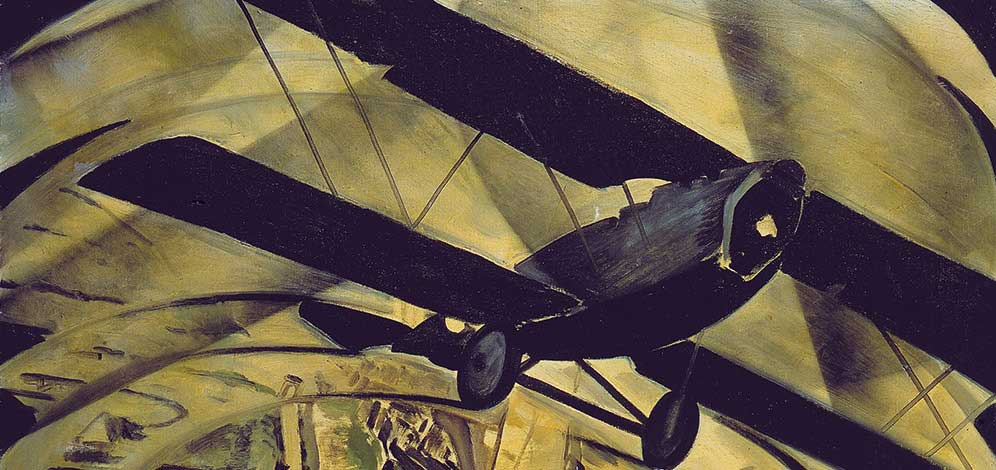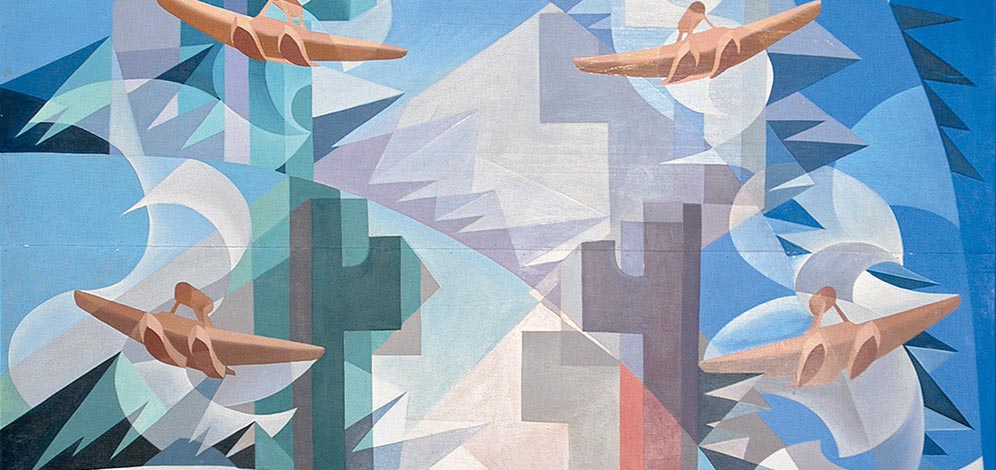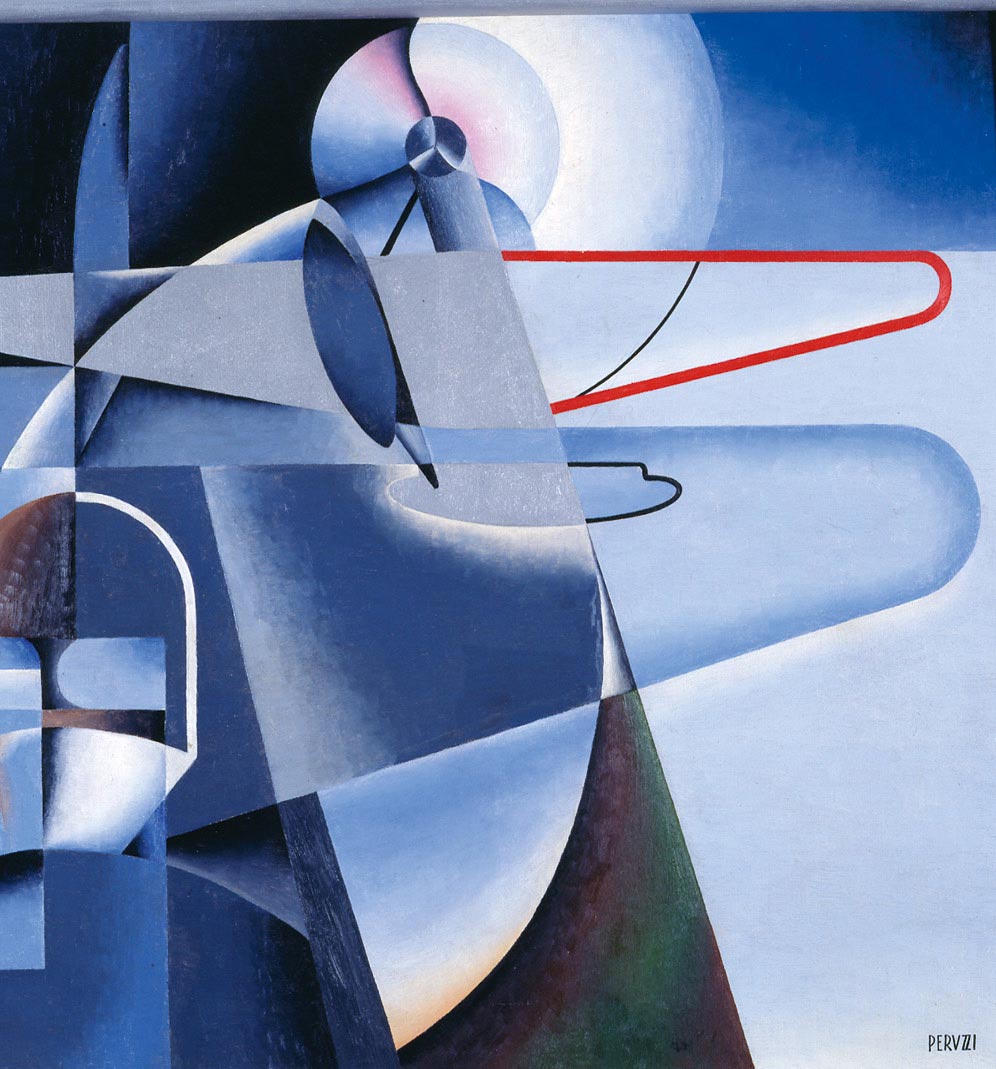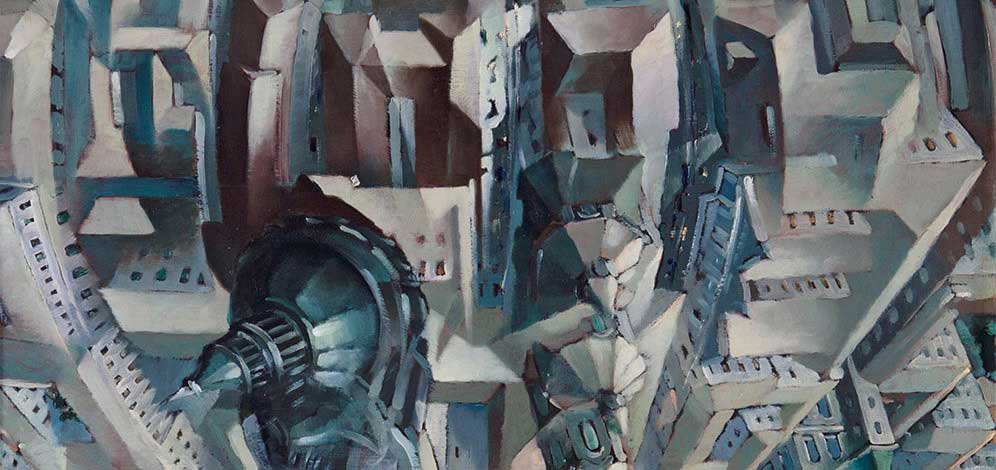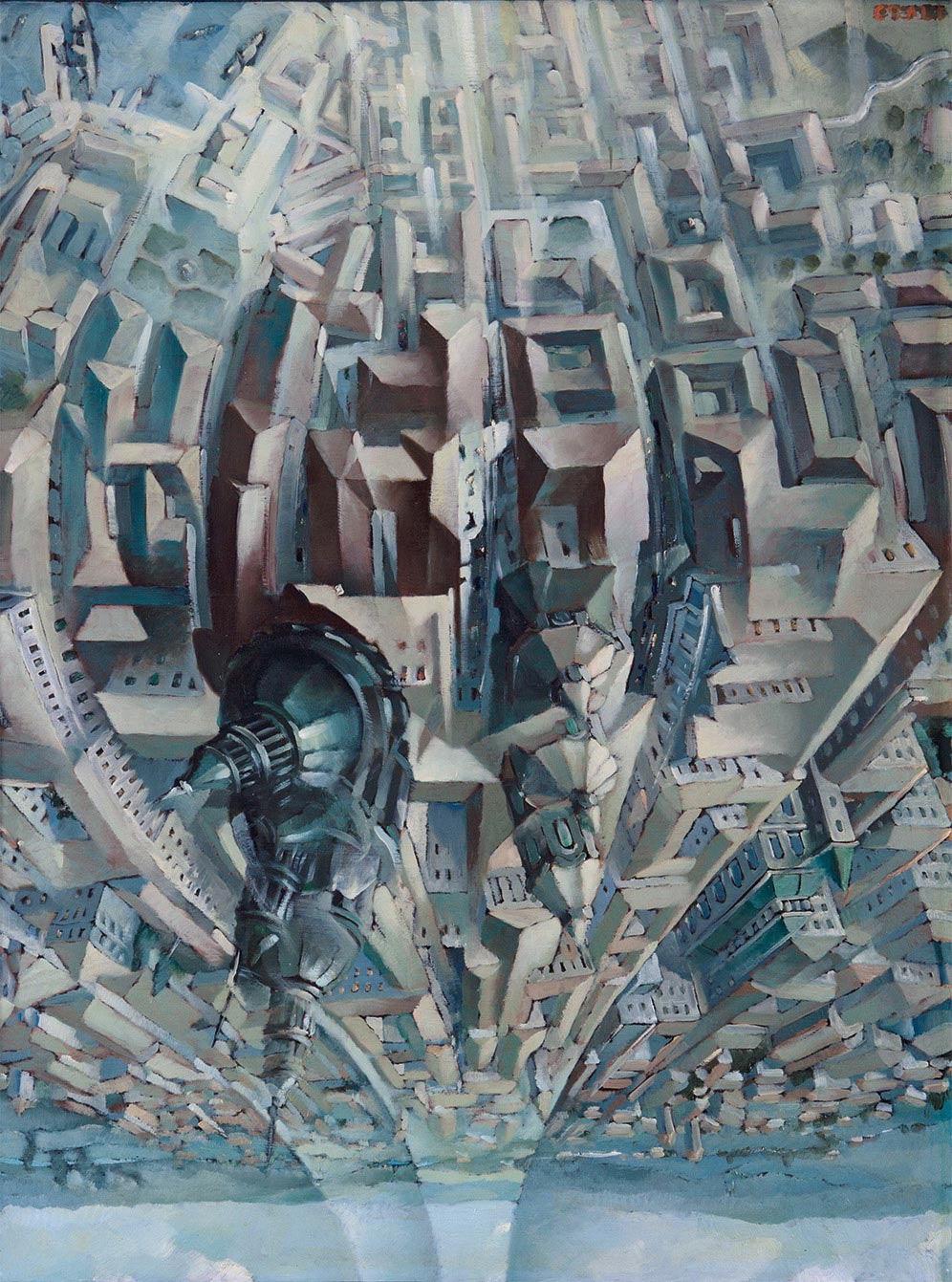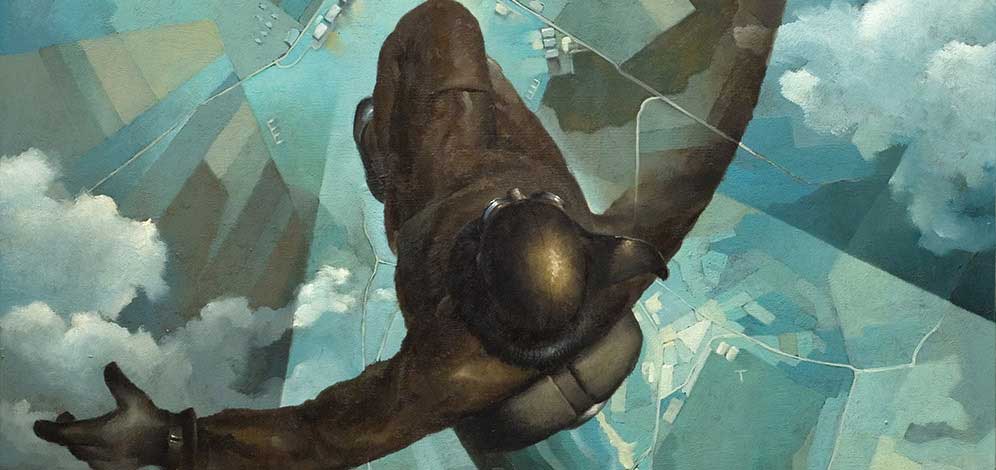The swirling, sometimes abstracted, aerial imagery of Futurism’s final incarnation, aeropittura (painting inspired by flight), arrived by the 1930s. Aeropittura emerged from the Futurists’ interest in modern aircraft and photographic technologies. Propelled by Italy’s military preeminence in aviation, their fascination with the machine shifted focus from the automobile to the airplane. In flight the artists found disorienting points of view and new iconographies to explore in painting, photography, and other mediums.
Evidenced by the work of Tullio Crali, Gerardo Dottori, and Tato, aeropittura represented a novel painting approach that allowed the Futurists to address nationalism, speed, technology, and war, providing radical perspectives that exalted these concepts. Benito Mussolini equated his Fascist regime with the Roman Empire at its peak; not coincidentally, many artworks from the 1930s incorporated imagery from Roman antiquity. Tato’s Flying over the Coliseum in a Spiral (Spiraling) (1930) depicts an airplane soaring over an iconic Italian structure, the circles of the plane’s path echoing the ancient building’s form. The Futurists’ engagement with the aerial quickly expanded beyond painting to other fields, including ceramics, dance, and experimental photography.

